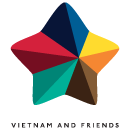XUAN THUY NATIONAL PARK
PROJECT

A project by Vietnam and Friends
I.
About Xuan Thuy National Park
Xuan Thuy National Park is located 150 km south-west of Hanoi in the coastal zone of the Red River Delta. Xuan Thuy is an internationally important wintering area for migratory water birds including such rarities as the Asian Dowitcher, Nordmann’s Greenshank, Spoon-billed Sandpiper, Saunders’s Gull and Black-faced Spoonbill. In addition to its importance for water birds, Xuan Thuy is also an important migratory stop-over for non-water birds, with large numbers of passerines passing through the site during the spring and autumn migrations. The national park comprises of three islands and mudflats, the most important habitat being the intertidal mudflats and natural mangroves.
Unfortunately despite being a national park and Vietnam’s first Ramsar Site, Xuan Thuy’s biodiversity is under threat from the spread of aquaculture and unsustainable lev-els of fishing and shellfish harvesting within the park boundaries.
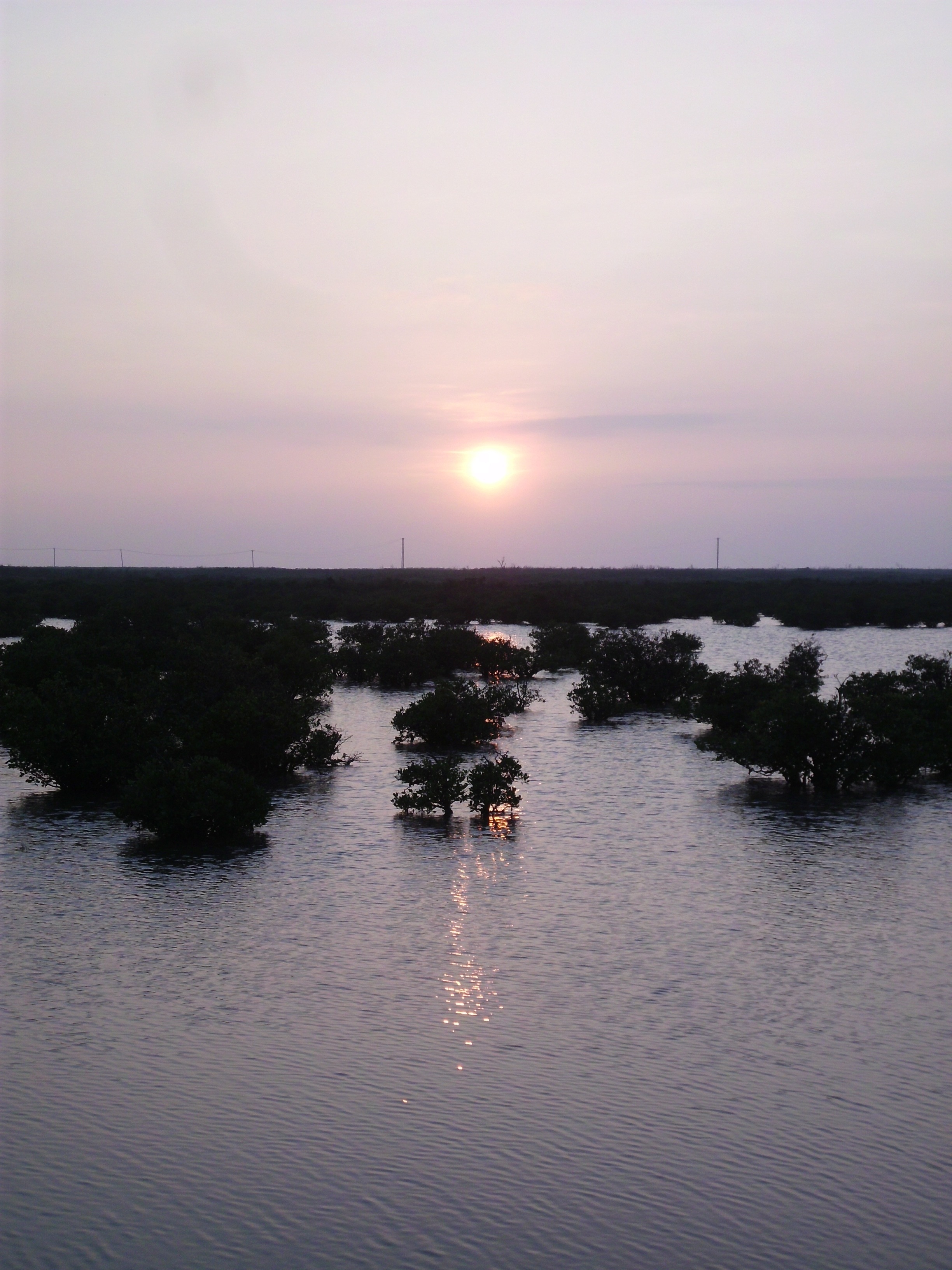
II. Objectives
The primary objective of a National park is, according to the IUCN (International Un-ion for Conservation of Nature) to protect natural biodiversity along with its underlying ecological structure and support environmental processes, and to promote education and recreation .
At the present state Vietnam's national parks cannot fully match all criteria the IUCN has set for national parks. Nature conservation in Vietnam still needs more development.
For the Xuan Thuy National Marine Park, protecting its unique mangrove forest is espe-cially difficult. The surrounding communities depend heavily on resources from the park - for most people it is the only way to earn money. However, the Xuan Thuy National park is trying to change this by promoting and developing ecotourism and alternative live hoods. To do so volunteers are needed for new ideas and their will to change something. Furthermore, the English levels of the community and the staff members of the park are not good enough to host foreign tourists. For this reason Xuan Thuy National park needs international volunteers willing to support the local education system by teaching English to high school students, as well as raising awareness for environmental issues.
But not only by teaching, also by working and living together with the staff members, the volunteers will share their knowledge of environmental work, and both sides can learn from each other. This leads to a sustainable development for more environmental awareness.
III. Work description
The main goals of the volunteers are to support the park and its staff wherever and however they can. Every kind of work inside the parks administration area, and also eco-logical, scientific work inside the protected national park area can be done by the volunteers.
This kind of work cannot be planned ahead, the volunteers will have to be ready at the start of working time at 8 am and ask and look for work. The amount of work also de-pends on the season, because there are certain seasons when more birds are present, so that a higher number of tourists book tours and come to watch these birds. So this kind of work depends always on time situation, season etc.
Duties and Responsibilities of volunteers:
* Supporting the staff
* Bringing new ideas
* Teaching English for the stuff and High school students
Supporting the local community :
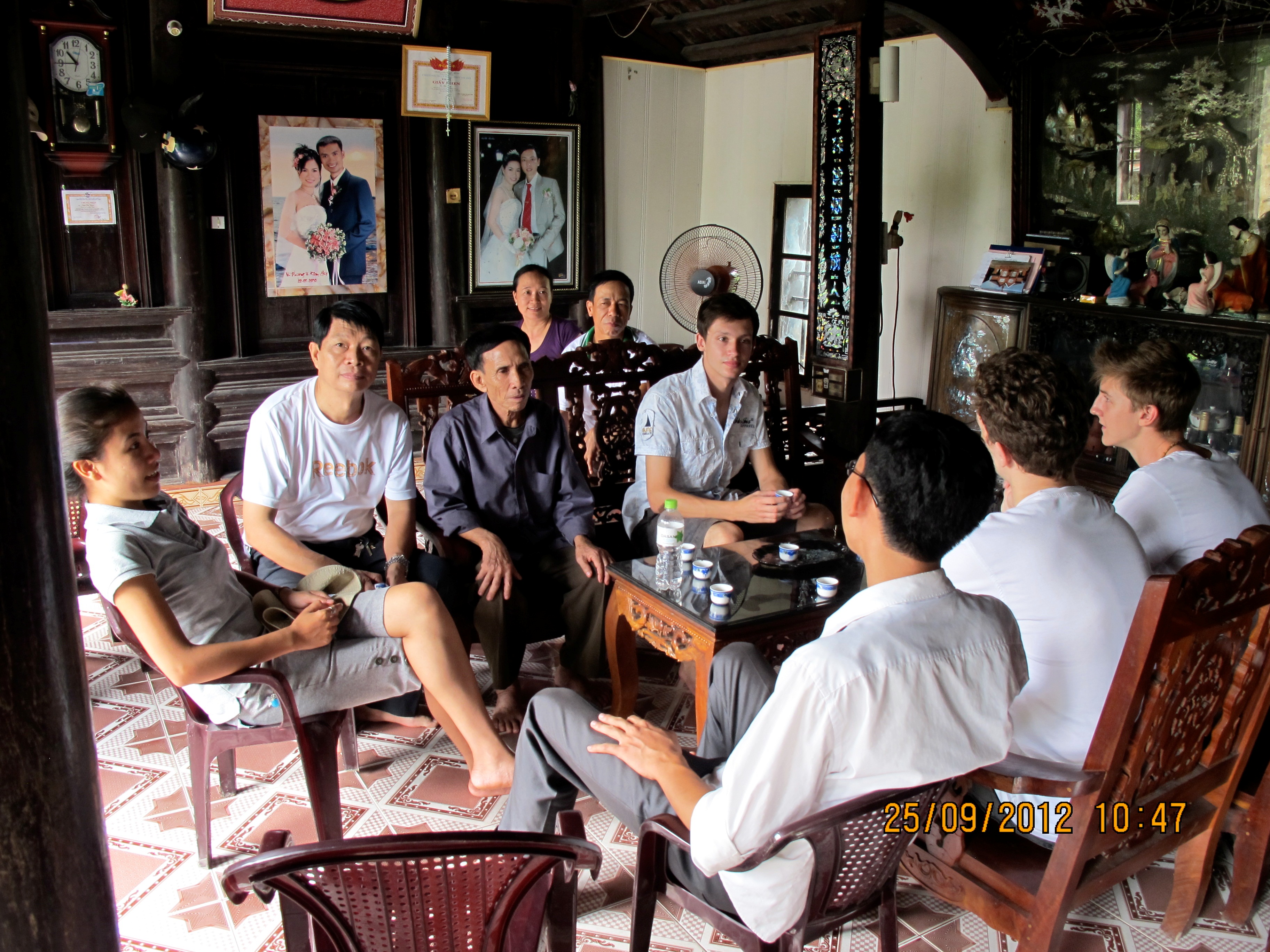 The national park activities also include work with the local community, for example "the mushroom club“. This is a project initiated and supported by the park, where some farmers, from the local communities (mostly from Giao Thien) grow mushrooms by using straw from the rice harvest, as an alternative to exploiting the aquatic resources (shell, clam, fish, crab, birds, mangroves etc.) of the park’s important core zone. The mushrooms give the farmers an important source of income. This is part of the national parks livelihood program to achieve the important goal of protecting the huge mangrove area and the hundreds of water- and migratory bird species from which most of them are also rare and critically endangered.
The national park activities also include work with the local community, for example "the mushroom club“. This is a project initiated and supported by the park, where some farmers, from the local communities (mostly from Giao Thien) grow mushrooms by using straw from the rice harvest, as an alternative to exploiting the aquatic resources (shell, clam, fish, crab, birds, mangroves etc.) of the park’s important core zone. The mushrooms give the farmers an important source of income. This is part of the national parks livelihood program to achieve the important goal of protecting the huge mangrove area and the hundreds of water- and migratory bird species from which most of them are also rare and critically endangered.
Developing ecotourism :
Working together with local people and organizers on ecotourism can also be a part of work. The goal is to bring more tourists/ecotourists in this area to improve the liv-ing conditions of the people and to emphasize the importance of the national park and its ecosystem. Ecotourism also plays an important role in the protection of the national park by giving the people an opportunity to earn money without taking resources out of the park.
Teaching English :
The national park project is not only about supporting the park and doing ecolog-ical work, but also consists in teaching English. This is because, the ecological work depends on many things and so it can be rare and cannot fit the routine of the volunteers. Teaching the park staff has priority because they need to improve their English for tours with foreign tourists and to speak with important scientists and researchers from other countries. The lessons in the park depend on when the staff has time and how motivated they are. Therefore, the volunteers should always ask when the staff has time. There are staff members with a high level of English and motivation but also some with a low level and motivation, so the volunteers should try to keep the English classes interesting and accessible for all.
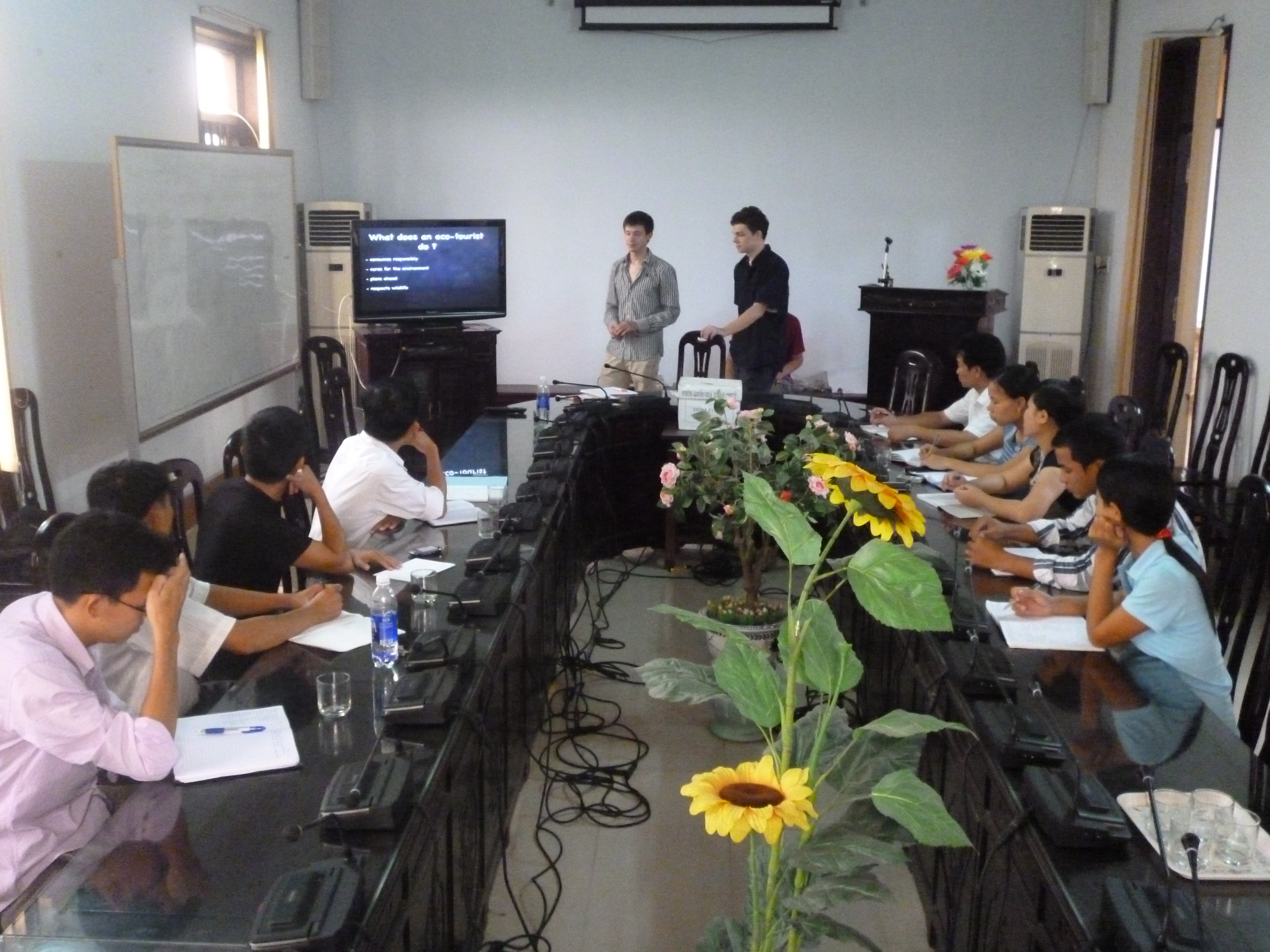
There is an English class in Giao Thien, which is the nearest commune. Giao Thien is important for the volunteers, as much of the work, and buses are in this commune.
Other classes were organized in Giao Yen and Xuan Truong. Both include the volunteer(s)
staying in a host-family and living there for a few days and teaching in the evening. Of higher priority, however, is Giao Yen because here are the most students, and their English
level is not as high as in Xuan Truong.
As experienced in 2012 - 2013 the class in Giao Thien has only 10-12 students, the class in Xuan Truong also between 10 - 12,
harder to predict is the number of students in Giao Yen. Their number can vary between 20 and 60. Therefore the volunteer(s) focus on Giao Yen because of the huge number of students, and their lower English levels. Teaching in these classes can be a possibility, but the volunteers themselves have to manage the amount of teaching so that they can also work and teach in the park, which is the main goal of this project.
Qualifications and experience of volunteers:
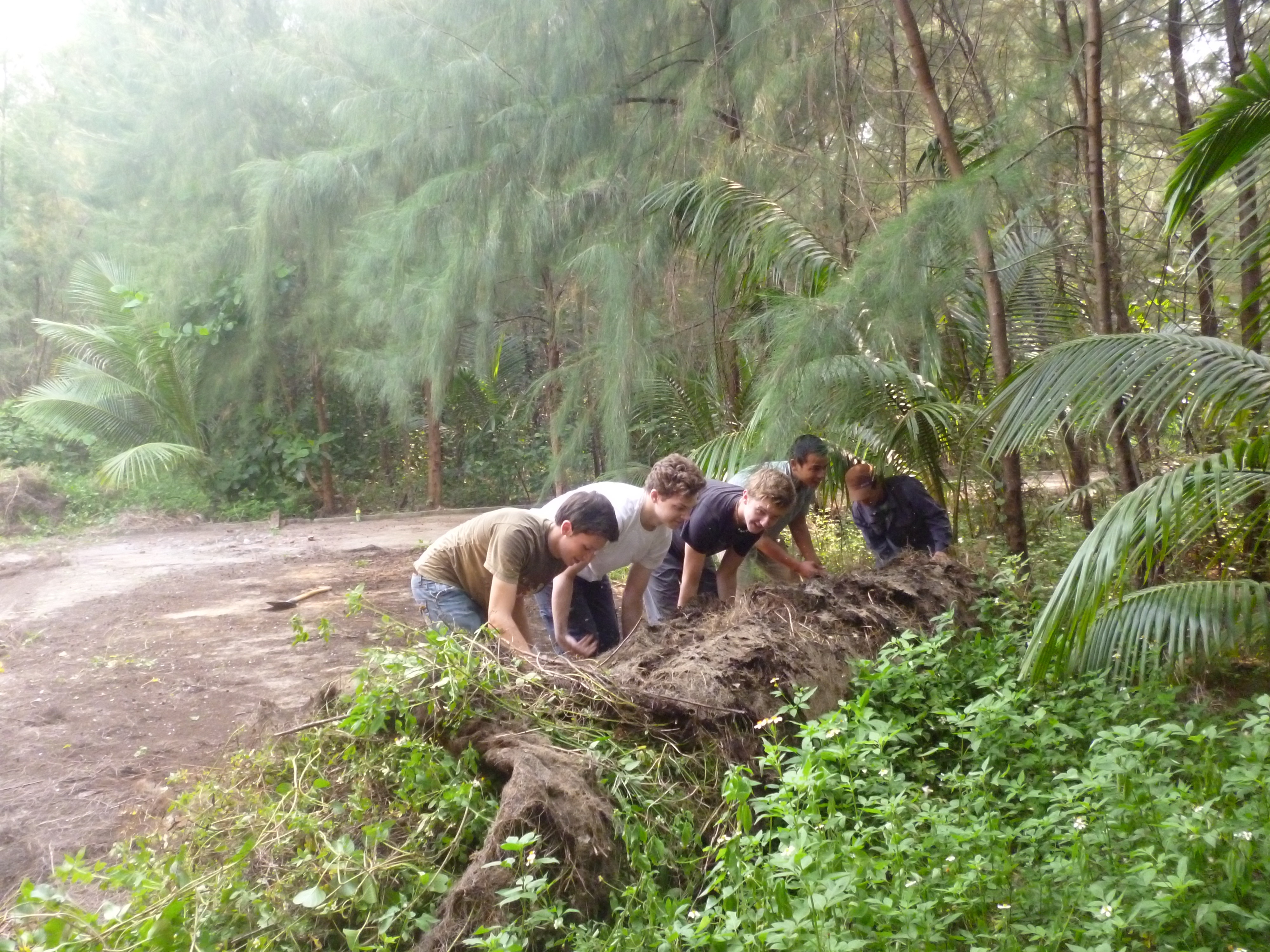
* Good English skills
* Good communication skills
* Independence
* Flexibility
* Open-mindedness
* Hard working
* High motivation
* Adaptability
IV. Achievements
The National park project has been carried out by VAF in 2012/ 2013 for the first time. The first task was to create a stable basis on which the volunteer can work on.
Shortly after the volunteer arrived in the national park they could develop personal rela-tionships with the staff members, helping them to work closer together. The personal relationship is the key factor in this project, enabling the volunteers to suggest their own ideas. By doing English lessons for the staff the volunteers did the first step to help developing ecotourism. Especially successful were the volunteers in implanting new English classes for High School students. Three classes in three different communities could be established.
V. Difficulties
Working in the park :
The working time is not fixed, sometimes there is a lot of work but usually there is not.
The attitude of the park members toward natural protection and preservation is very different to what one is used to in western countries. They are not trying to keep nature clean of the rubbish; in fact they burn rubbish as is it common in this region of Vietnam. Instead of walking they will often use their motorbike for short distances. If the park director is not present their willingness to work will decrease drastically. The motivation to
learn English is generally low. Implanting new programs in the national park is very diffi-cult, most likely they will not be maintained after the volunteer is gone.
The volunteers have to be very adaptable and prepared for anything, as one never knows what might happen during the day. They also should ask and look for work in the park when there is none present or try to establish their own activities.
Teaching English :
There is an active demand for teaching English. The volunteer will have to organize his time very carefully to combine working in the park, teaching and leisure time.
It can be very difficult to teach a class with lots of student with different English levels. Whereas the high school students tend to be really motivated, the staff tends to be not to. It‘s the volunteer’s duty to motivate the staff by asking for English lessons.
VI. Future perspectives
We would like to develop this project in a way that clearly focusses on ecological work in the park. To do so, we would like to cooperate with researchers and scientists in order to protect the environment and lead to sustainable development.
Another important aspect is dealing with rubbish and finding a solution to the problem where to dispose the rubbish. This will be very challenging as there is no infrastructure for rubbish collection. Another goal is to increase and establish ecotourism in the local community to create new ways of earning money. Furthermore, the museum of the park can be improved by adding exhibits, cultural objects of the local area and detailed texts about mangroves and birds as well as an English description.
VII. How to get there
The Xuan Thuy national park is located in the countryside of Nam Dinh province in Northern Vietnam. However it is not difficult to find the right buses from Hanoi to Giao Thien, which is closest to the park.
• VAF’s house - Bus 41 -
Giáp Bát station
Take a bus with Giao Thuy - Giao Thien on it
OR
• VAF’s house: - Bus 33
- Mỹ Đình station
Take a bus with Giao Thuy - Giao Thien on it
![]()
DOWNLOAD OUR PROJECT DESCRIPTION
